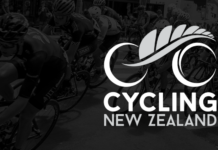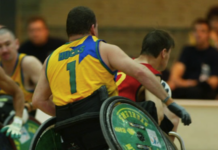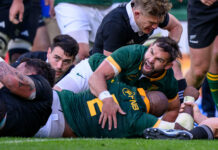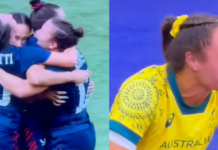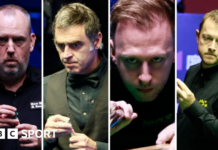Three-time gold medallist Shelly-Ann Fraser-Pryce will take to the starting blocks this weekend for what the Jamaican sprinter says are her last Olympic Games. As one of the fastest women in history, with a 10.6-second personal best in the 100 metres, she is a star attraction, even for her fellow athletes in Paris, including a New Zealand rugby player who was moved to tears by meeting Fraser-Pryce this week.
Outside the Games, however, following Fraser-Pryce’s career is difficult. When she lined up for her opening meet of the season in June, there was no dedicated television broadcast, leaving track fans and journalists trawling social media for clues about where to watch. A local fan eventually streamed her heat on Instagram Live.
Athletics, which starts at the Paris Olympics today, is often the biggest draw at an event that styles itself as the “greatest show on Earth”. From Jesse Owens and Roger Bannister to Allyson Felix and Usain Bolt, its icons have produced performances that have redefined the limits of human achievement.
The sport is one of the world’s oldest — and most popular — with championships dating back to 776BC.
But for many sports fans, the only time they pay attention to athletics is during the Olympics, once every four years, when more than 1bn people are expected to watch the global multi-sport competition.
Compared to other largely individual sports with abundant resources, such as tennis and golf, athletics has been mostly overlooked. The commercial infrastructure of track and field appears to be stuck in antiquity, with limited funding for events, less competitive prize money for athletes and a shortage of accessible media coverage.
“One of the biggest complaints you have now from fans [is] that they can’t find the sport when they want to,” says Michael Johnson, the four-time Olympic champion sprinter. “People on social media [are] saying, ‘I didn’t know this meet was happening. Had I known, I would have watched.’”
In an effort to fill that gap, a wave of new projects — some of them backed by prominent investment firms — is in the works to make sure track and field does not have to wait another four years for its time in the limelight.
 Former sprinter Michael Johnson, who won four Olympic golds, has plans for a new track competition to shake up athletics © Oscar Gonzalez/Sipa USA via Reuters
Former sprinter Michael Johnson, who won four Olympic golds, has plans for a new track competition to shake up athletics © Oscar Gonzalez/Sipa USA via Reuters American hurdler Sydney McLaughlin-Levrone is among the athletes set to feature at the new event © Getty Images
American hurdler Sydney McLaughlin-Levrone is among the athletes set to feature at the new event © Getty Images
“The sport has fallen into a pattern where everything is a preparation race for the World Championships or the Olympic Games, diminishing the importance of other competitions,” says Gareth Balch, chief executive of Two Circles, a consultancy that has worked with Johnson and World Athletics, the sport’s global governing body.
Johnson has unveiled plans to shake up athletics with Grand Slam Track, a new track race competition in partnership with the sports group Winners Alliance, which is backed by hedge fund titan Bill Ackman. The event will feature 400-metre hurdles world record holder Sydney McLaughlin-Levrone and Scotland’s world champion 1,500-metre runner Josh Kerr.
Reddit co-founder Alexis Ohanian is another wealthy investor fighting to pull athletics out of the realm of niche fandom and propel it into the mainstream. In September, he will host Athlos, a new women-only track competition in New York, adding to a number of investments he and his wife, tennis legend Serena Williams, have made into women’s sport.
World Athletics does not want to be left behind. Its president, Lord Sebastian Coe, recently set out plans to hold a new event called the World Athletics Ultimate Championship every two years, beginning in 2026, to add to the competition calendar. The event will alternate alongside its existing World Athletics Championships, which also take place every two years.
“I want people to look at this event in the way they would look at a Super Bowl, Wimbledon or a big test [cricket] match”, says Coe. “This is a must-see event, and that is how we’ll build it.”
For devoted fans of athletics, the leading forum to enjoy the sport outside the Olympics and World Athletics Championships is an event known as the Diamond League.
The series of 15 competitions runs from April to September, during which athletes can amass points, culminating in a capstone championship in Brussels. Originally hosted across six European cities, the league has expanded further afield to locations such as Eugene, in the US state of Oregon, and Xiamen, China.
 Sweden’s Armand Duplantis broke the men’s pole vault world record at a Diamond League event in Xiamen, China, in April © Reuters
Sweden’s Armand Duplantis broke the men’s pole vault world record at a Diamond League event in Xiamen, China, in April © Reuters American long-distance runner Anthony Rotich competes in a 3,000-metre steeplechase in Paris as part of this year’s league © Getty Images
American long-distance runner Anthony Rotich competes in a 3,000-metre steeplechase in Paris as part of this year’s league © Getty Images
The Diamond League meets often foster top-tier performances, including world records in the men’s pole vault, women’s mile and 5,000 metres in the past year or so. But athletics is not yet considered must-see television in a crowded market. The decentralised nature of the sport, outside the Olympics, doesn’t help as it means people are not necessarily aware of all the separate events going on.
“The NFL can guarantee . . . that they’re going to have millions of people tune in. Track and field isn’t anywhere near that,” says Ryan Fenton, general manager of track and field at FloSports, a sports streaming platform founded in 2006.
Fenton, a former college runner at Clemson University, South Carolina, has watched as the sport has struggled to generate revenue from meets. For athletes, this makes earning a living from the sport challenging.
Many have to rely on endorsements from shoe brands. Sponsorship contracts tend to include bonuses for setting records and making the Olympics, but if an athlete gets injured or fails to make championship teams, their payout can also be reduced. Athletes often compete for prize money at existing meets outside the Olympics and World Championships, but purses and payouts have traditionally not been large enough to generate a sustainable living.
Athletics competitions outside the Olympics
“If I’m [an athlete] in the US, for me to travel there [for the Diamond League], compete, incur expenses, fly back, get back into training — there’s not a huge take-home,” says Fenton. “If I make the Olympic team and win a medal, that incentive could be mid-six figures, close to seven figures.”
There is also endorsement disparity in the sport depending on the athlete’s event. Stars in popular sprint events like the 100 metres can earn in the high six figures from sponsorship deals, while the top throwers and jumpers may earn as little as $32,000 a year, according to a 2018 survey of athletics agents by LetsRun, a dedicated track and field news site.
Olympic medals often translate to lucrative endorsement deals with other brands. McLaughlin-Levrone has done promotions with Gatorade and New Balance as well as watchmaker Tag Heuer, cosmetics brand Neutrogena, and jeweller David Yurman. Her commercial success means that, unlike her top competitors in the 400-metre hurdles, such as Dutch world champion Femke Bol, she does not need to race as often for prize money.
When I was competing, prize money was more. Appearance fees were higher. There were more people watching the sport. The sport wasn’t as hard to find
Johnson’s Grand Slam Track is hoping to change this dynamic, not least because McLaughlin-Levrone is the face of the meet. She was the first athlete committed to its stated programme of four annual meets, at which participants compete twice over the course of each three-day event. Prize purses, which will total $12.6mn, will pay winners $100,000 going down to $10,000 for eighth place.
“It’s going to be a huge step forward for track and field, just being able to grow the visibility as well as the compensation for athletes [and] giving fans what they want”, McLaughlin-Levrone told FloTrack, a subdivision of FloSports, in June.
In April, World Athletics said track and field athletes would earn $50,000 for winning gold at the Paris Games, becoming the first sports federation to pay out prize money at the Olympics. The Ultimate Championship will carry a $10mn prize fund, including $150,000 for winners, and every athlete will be paid for participating. The prize money for winning a Diamond League event is $10,000.
Grand Slam Track is designed not only to address the frustrations of low pay and meets that fail to register with fans, but to give athletes a platform to build their personal brands.
“Pay has actually gone down,” says Johnson. “When I was competing, prize money was more. Appearance fees were higher. There were more people watching the sport. The sport wasn’t as hard to find.”
Both Grand Slam Track and the Ultimate Championship are promising to boost financial rewards for athletes at a time when pay for elite sports stars is booming. Football star Cristiano Ronaldo and golfer Jon Rahm both agreed contracts worth hundreds of millions of dollars to play for Saudi Arabia-backed entities, while Japanese baseball star Shohei Ohtani signed a $700mn contract to play for the Los Angeles Dodgers.
“Some sports are going to struggle to attract the best athletes if there’s not a path to making a living there. That’s going to [lead to] a downward spiral,” says Dan Porter, chief executive of Overtime, a digital sports media company that has built new sports competitions in basketball, American football and boxing.
Traditionally, shoe companies have been “a huge part of our landscape”, according to Coe, bankrolling not only individual athletes but entire meets, leading to conflicts such as an Adidas athlete not being offered a lane in a race at a Nike competition or vice versa.
 Lord Sebastian Coe, president of World Athletics, presents Dutch athlete Femke Bol with a cheque at an awards ceremony in March © Getty Images
Lord Sebastian Coe, president of World Athletics, presents Dutch athlete Femke Bol with a cheque at an awards ceremony in March © Getty Images Noah Lyles celebrates after winning the men’s 200 metres at the World Athletics Championships in Budapest last year © Kyodo
Noah Lyles celebrates after winning the men’s 200 metres at the World Athletics Championships in Budapest last year © Kyodo
Like Grand Slam Track, Coe says the Ultimate Championship will be “shoe-agnostic”.
By diversifying investment into the sport from companies outside the traditional sports landscape — newer World Athletics sponsors include Sony, Deloitte and Tata Communications, for example — will fuel competition, says Coe.
“Athletics is a fantastic place for sponsors or broadcasters to invest more time because there’s a lot of upside,” says Balch, the consultant, referring to greater potential for earning returns.
Athletics is not alone in trying to reinvent its competitive format amid a quest for new audiences. In the past several years, inaugural events in cricket, motorsport, sailing and golf have aimed to shake up their respective landscapes, including a forthcoming effort by Tiger Woods and Rory McIlroy for a television-centric team golf league.
The strategy is to put athletes at the centre of the business plan to achieve success in modern sports and entertainment, says Ahmad Nassar, chief executive of Winners Alliance, which negotiates commercial deals for hundreds of athletes.
“You’re competing for people’s free time,” Nassar says. “If you’re not putting a compelling entertainment product out there, people just go do something else.”
Ohanian, the Reddit co-founder, says the September launch of Athlos will be a one-day event for track athletes, featuring a musical performance by Megan Thee Stallion to entice new fans, and will pay $60,000 for first place.
$700mnSize of contract signed by baseball star Shohei Ohtani to play in Los Angeles
$50,000Amount Olympic athletes earn from World Athletics for winning gold in Paris
He describes a quick sprint race in which “a bunch of people line up, they all go, and someone wins” as having a “strong visual component” that is straightforward to market. “In a short attention span environment, it’s very easy to say, ‘Pay attention to this. Watch,’” says Ohanian. The idea is to capture the imaginations of everyone from “my six-year-old daughter [to] an octogenarian, neither of whom has ever been in a track and field event before”.
One aspect that neither Athlos nor Grand Slam Track will have, at least in their inaugural editions, are field events — jumps, throws and multis like the decathlon and heptathlon. “I guess we need a field league huh,” Olympic javelin thrower Kara Winger posted on X.
Ohanian says he is putting out “the minimum viable product version” to get it off the ground, but hopes to build out Athlos to include field events in the future, but concedes they were initially excluded for “storytelling” reasons.
It is an issue that longtime stewards of the sport have grappled with for generations. Coe, the president of World Athletics, says field events have presented broadcasting challenges.
“In some field events, you’re probably only getting two and a half minutes of live action in an hour of coverage,” he tells the Financial Times. “Some things are more popular than others. But that’s not a reason to just go out and cull them. It’s an invitation to do everything you can to actually improve the product.” Unlike the other new events, the Ultimate Championship will feature jumps and throws in addition to races.
Media executives are less generous. In the US, Olympics rights holder NBC recently relinquished the domestic broadcast rights to the Diamond League. Instead, the company agreed last week to pay roughly $28bn for 11 years of NBA broadcasts beginning in 2025.
“We have to hunt for the biggest species,” says Mark Lazarus, chair of NBCUniversal Media Group. “The Diamond League was always good, we enjoyed having it, but we have other aspirations.”
Beginning next year, the Diamond League in the US will move to FloTrack, where viewers must pay $30 per month, or $150 per year, to watch its programming. The move drew backlash from the wider athletics community in the US for stifling the sport behind a stiff paywall.
It shouldn’t just be the athletes who are waking up at the beginning of each year trying to figure out how they can be better
Fenton, the FloSports executive, says he understands some of the concern, but adds that the platform also carries the London, Tokyo and Berlin Marathon broadcasts as well as high school meets, aiming to cater to fans of the sport from their teens through adulthood.
“At the core of who we are and who we serve are those diehard fans within our sports that want to consume as much as they can,” he says.
Coe, who is chair of the Diamond League’s board, says the series engages some 30mn to 40mn viewers each year around the world, but acknowledges management can do better in modernising the circuit.
Some people would prefer to see the focus shift away from world records and move more on to rivalries and personalities to draw greater interest.
A new Netflix series, Sprint, debuted last month focusing on the event’s top aspirants in Paris, including Jamaica’s Fraser-Pryce, Shericka Jackson, and Sha’Carri Richardson of the US. The show sheds light on the historic competitiveness between the two countries, which dominate the sprints.
To keep things more exciting, the World Athletics Ultimate Championship will take place over three nights, with three hours of competition each day. Field events will be straight finals without qualifying rounds. That contrasts sharply with most world and national championship meetings, which sometimes take longer than a week to complete to accommodate every heat and semi-final.
“It shouldn’t just be the athletes who are waking up at the beginning of each year trying to figure out how they can be better,” adds Coe. “Everybody [in athletics] should be in that mindset.”
As billionaires, private equity and sovereign wealth groups plough funds into sport, athletics is attracting the interest of significant investors. Winners Alliance, for example, is backed not only by Ackman but investment firm Prysm Capital.
World Athletics, however, spent roughly two years assessing whether to bring in external investors, says Coe. But following talks with hedge funds, venture capitalists and sovereign groups, the governing body decided against outside funding partners.
Budapest, the first host city for the Ultimate Championship, will finance the meet, according to Coe.
“We’re not saying ‘no’ forever but that’s probably not the route we’re going down at the moment,” he adds. “We just felt that we wanted to grow, we could grow those revenue streams without additional funding and certainly without handing chunks of the sport over [to investors].”
Still, the sport’s struggles present a “huge opportunity for investors and entrepreneurs”, says Balch, of Two Circles. “Athletics is probably the most undervalued sport in the world.”
Source link : https://www.ft.com/content/bea292f5-302a-444f-bb69-b2ca9cd682f4
Author :
Publish date : 2024-08-01 11:47:51
Copyright for syndicated content belongs to the linked Source.














